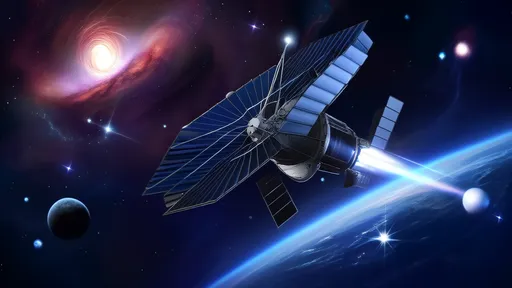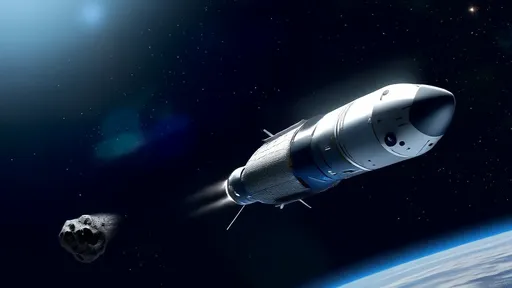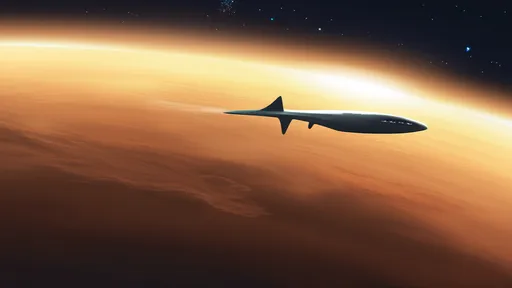Humanity has achieved a historic milestone in planetary defense with the successful alteration of an asteroid’s trajectory. NASA’s Double Asteroid Redirection Test (DART) mission, conducted in late 2022, marked the first time humans intentionally changed the motion of a celestial body. The implications of this achievement extend far beyond scientific curiosity—it represents a critical step toward developing practical tools to protect Earth from potential asteroid impacts.
The DART spacecraft, roughly the size of a vending machine, collided with Dimorphos, a small moonlet orbiting the larger asteroid Didymos, at approximately 14,000 miles per hour. This kinetic impactor technique was designed to test whether a spacecraft could autonomously navigate to and deflect an asteroid. Initial observations confirmed the mission’s success: Dimorphos’ orbit around Didymos was shortened by 32 minutes, far exceeding the minimum benchmark of 73 seconds that NASA had set for mission success.
Scientists worldwide celebrated the outcome as a watershed moment for planetary defense. For decades, the idea of deflecting an asteroid existed primarily in theoretical models and Hollywood scripts. The DART mission transformed this concept into reality, proving that humanity now possesses the technological capability to alter the course of potentially hazardous near-Earth objects (NEOs). Telescopes across the globe—and even in space—tracked the event, capturing unprecedented data on the asteroid’s composition, debris plume, and orbital changes.
The collision’s aftermath revealed unexpected details about asteroid physics. Contrary to some predictions, Dimorphos exhibited a more rubble-pile structure than anticipated, with surface material behaving like loose gravel rather than solid rock. This discovery has profound implications for future deflection strategies, as the effectiveness of kinetic impactors may vary depending on an asteroid’s composition. Researchers are now analyzing whether the ejected material (known as ejecta) contributed significantly to the momentum transfer—a phenomenon that could enhance deflection efficiency.
International collaboration played a pivotal role in assessing the mission’s success. The European Space Agency’s upcoming Hera mission, scheduled to arrive at Didymos in 2026, will conduct a detailed post-impact survey. By measuring Dimorphos’ mass, crater morphology, and internal structure, Hera will provide crucial data to refine deflection models. Meanwhile, observatories from Chile to South Africa contributed ground-based measurements, while space telescopes like Hubble and James Webb captured the impact’s immediate effects across multiple wavelengths.
Public engagement reached unprecedented levels during the mission. Live streams of the impact garnered millions of viewers, while citizen scientists contributed observations through telescope networks. The mission’s accessibility helped demystify complex astrophysics, with social media platforms buzzing about "nudging asteroids" and "planetary defense in action." This cultural moment underscored how existential threats—and humanity’s ability to counter them—can unite global attention.
While DART’s success is monumental, experts caution that planetary defense requires sustained effort. Statistically, asteroids larger than 140 meters (capable of regional devastation) strike Earth roughly every 20,000 years. Current surveys have cataloged about 40% of such objects, leaving thousands still undetected. The Vera C. Rubin Observatory, set to begin operations in 2024, will dramatically improve detection rates with its wide-field scanning capability. However, early warning systems are only half the solution—deflection technologies must advance in parallel.
The mission also sparked discussions about governance frameworks for future asteroid deflection. Unlike terrestrial threats, asteroids don’t respect national borders, raising questions about decision-making authority and liability. The United Nations Committee on the Peaceful Uses of Outer Space has begun addressing these issues, but international treaties may need updates to account for active planetary defense measures. Some scholars propose analogies to climate change mitigation—a global challenge requiring coordinated action despite geopolitical tensions.
Looking ahead, DART’s legacy will shape both scientific research and popular imagination. Its success validates kinetic impactors as a viable deflection method, but alternative approaches—such as gravity tractors or laser ablation—may prove better suited for certain scenarios. The mission has already inspired next-generation proposals, including tests for deflecting faster-moving or metallic asteroids. Perhaps most importantly, DART demonstrated that humanity need not share the fate of the dinosaurs—we can write our own ending to potential impact stories.
Beyond practical defense applications, the mission offers philosophical insights. For the first time, our species has altered the dynamics of our solar system not by accident, but by design. This capability carries profound responsibility—to wield such power wisely, to invest in early detection, and to recognize that planetary defense ultimately transcends national interests. As data continues to pour in from DART’s aftermath, one truth becomes clear: we’ve entered a new era where celestial mechanics need not be destiny.

By /Jun 7, 2025

By /Jun 7, 2025

By /Jun 7, 2025

By /Jun 7, 2025

By /Jun 7, 2025

By /Jun 7, 2025

By /Jun 7, 2025

By /Jun 7, 2025

By /Jun 7, 2025

By /Jun 7, 2025

By /Jun 7, 2025

By /Jun 7, 2025

By /Jun 7, 2025

By /Jun 7, 2025

By /Jun 7, 2025

By /Jun 7, 2025

By /Jun 7, 2025

By /Jun 7, 2025

By /Jun 7, 2025

By /Jun 7, 2025